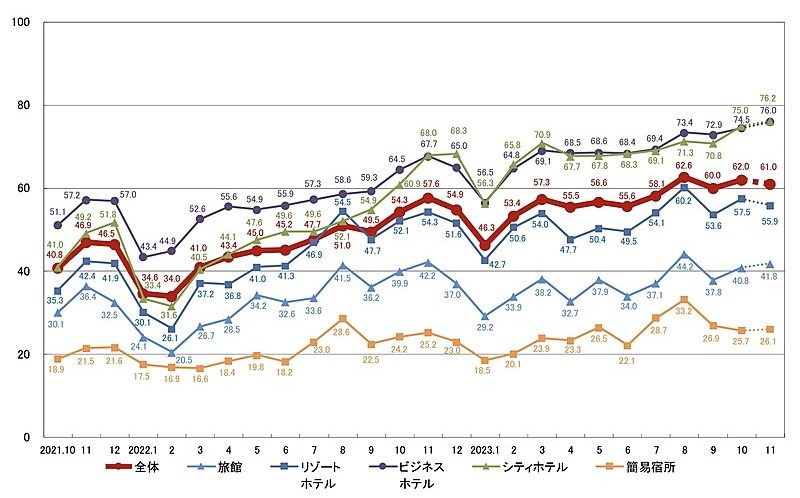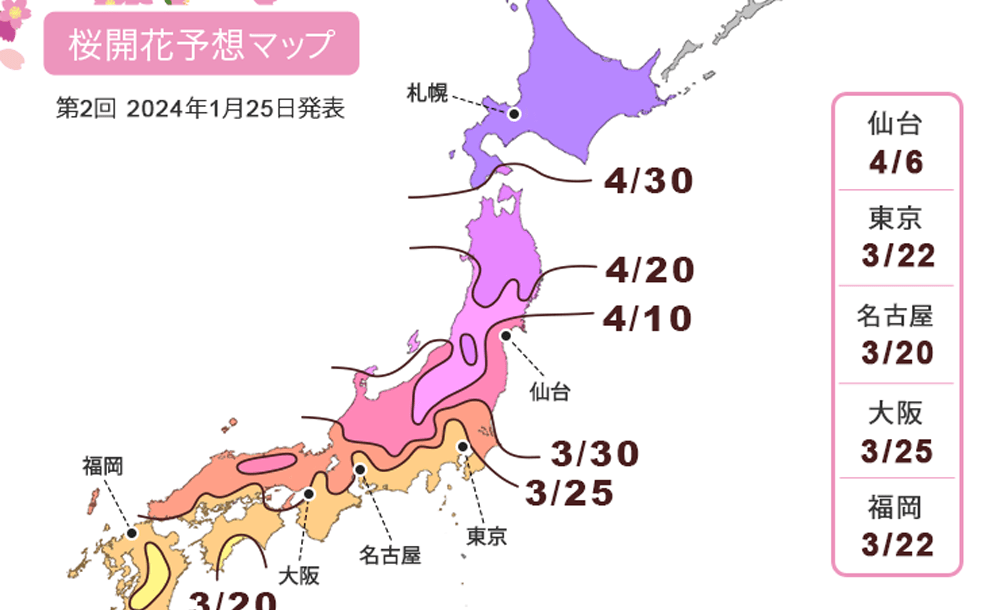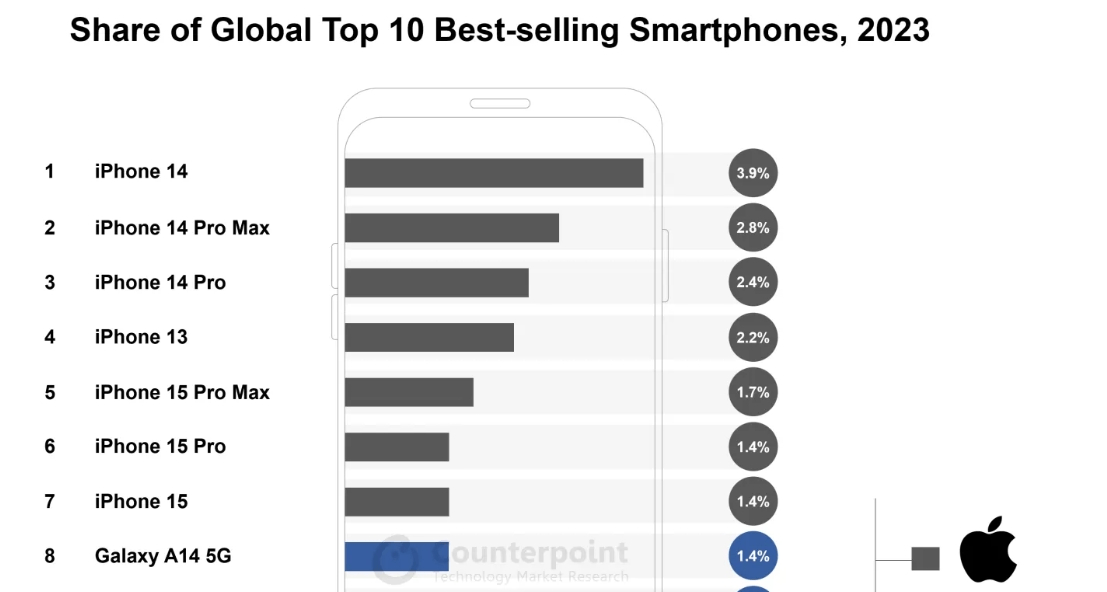The Decline in Birth Rates in Japan (a 60% decrease over half a century) is Roughly Aligned with the Decline in First Marriages. However, According to a Nationwide Survey, Young People's Desire to Marry Remains High, with over 80% of both men and women expressing such intentions. If this is the case, what are the underlying reasons that prevent them from getting married or even dating?
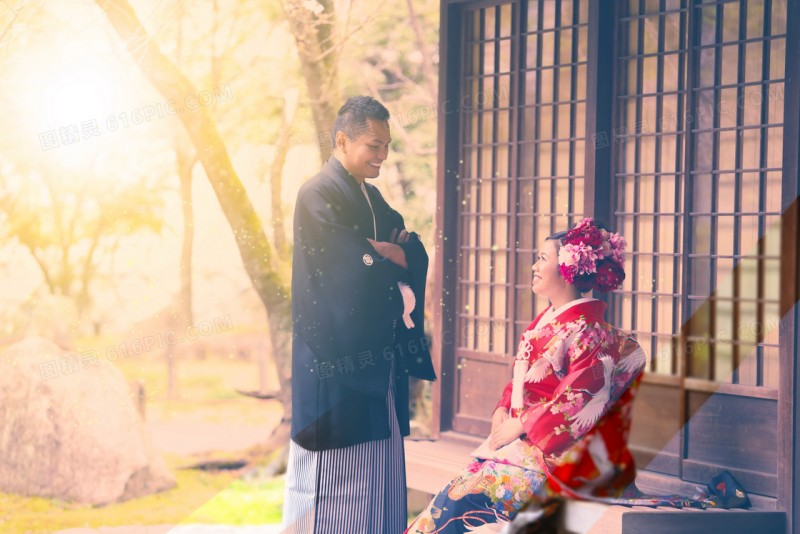
The Accelerating 'Visualization' of Divorce
In 2022, there were 501,000 marriage registrations and 179,000 divorce registrations in Japan. The divorce-to-marriage ratio (referred to as the 'divorce index') has reached 35%. What does this really signify?
In a societal context where more than one in every three couples gets divorced for every three marriages, it's difficult to consider Japan as a society where young people hold much hope for marriage. In other words, the 'divorce index' can be seen as an indicator of the 'visualization of divorce,' but in reality, this index exhibits significant variations among each prefecture.
For this reason, as trends calculated on a yearly basis are not visible, here is the ranking calculated over a period of 10 years:
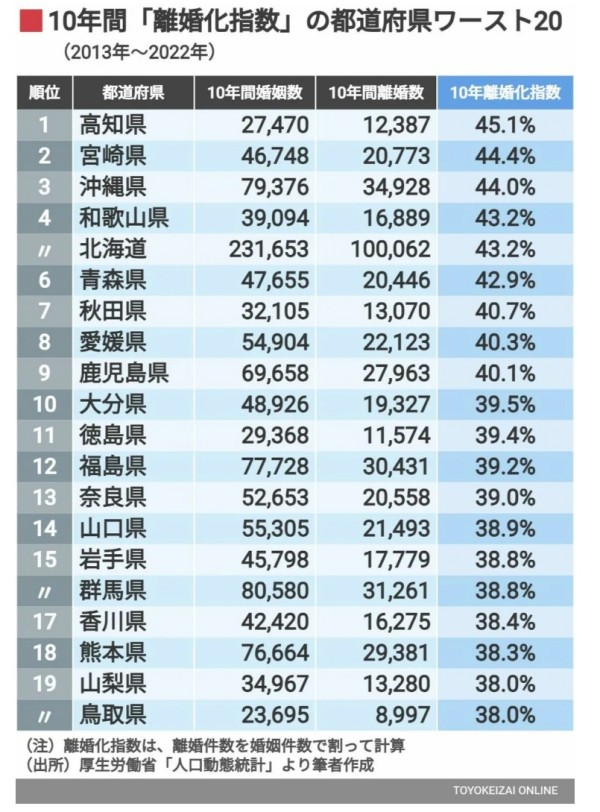
Kochi Prefecture, ranking first, submitted 27,000 marriage registrations over the course of 10 years while simultaneously submitting 12,000 divorce notifications, resulting in a divorce rate of 45.1% during that period.
In other words, in Kochi Prefecture, for every two marriage reports you hear, you will also hear one divorce report. What could be the reasons behind this phenomenon?
The nine prefectures with divorce indices exceeding 40% show certain trends. Since the outbreak of the COVID-19 pandemic from 2020 to 2022, the male population in Kochi Prefecture increased by 2.0 times, Miyazaki Prefecture by 1.7 times, Hokkaido by 8.3 times, Aomori Prefecture by 1.5 times, Akita Prefecture by 1.5 times. Among them, Ehime Prefecture increased by 1.6 times, and Kagawa Prefecture increased by 1.6 times. Kagoshima Prefecture saw a 1.5-fold increase in males and a 3.2-fold increase in females.
Over the three years since the outbreak of the COVID-19 pandemic, 39 regions have witnessed population declines. On average, the decline in the female population is 1.4 times higher than that of males. In other words, in seven out of the nine regions with divorce indices exceeding 40%, the rate of female population decline is higher than the average for areas experiencing demographic declines.
On the other hand, Okinawa Prefecture is one of the eight regions that saw population growth (inflows exceeding outflows) from 2020 to 2022, with the remaining seven attracting more females than males. In just one prefecture, this number is 3.2 times. The surplus of males is a contributing factor to the trend of male population surplus.
The Unfortunate Cycle Continues
According to census results, women tend to marry at a younger age and are more likely to get married than men. Therefore, in regions where young women are noticeably scarce, there is a balance between unmarried men and women. The author believes that in areas where the number of unmarried individuals is frequently decreasing, the proportion of people feeling a crisis about being unmarried is lower.
In addition to the inherent difficulty for young people to get married, combined with a lower sense of crisis among the unmarried, Japan may face a situation where divorces outnumber marriages.
In any case, the majority of the regions with high divorce indices are areas where there has been a long-term outflow of surplus populations in their twenties. In other words,
Outflow of young population within the prefecture ⇒ Decrease in the number of marriages ⇒ Increase in the divorce index
This is an unfortunate cycle that continues.
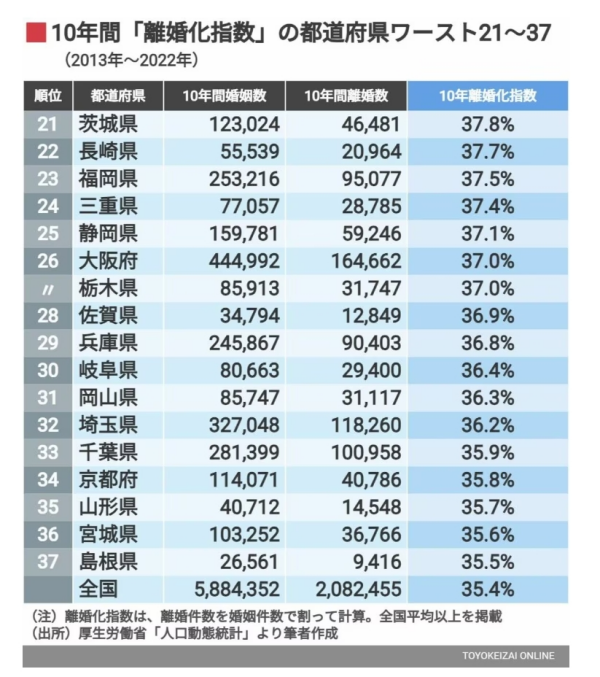
Furthermore, 37 prefectures have divorce indices exceeding the national average of 35.4%, with a range of 9 percentage points between the top-ranked 45% (approximately 1/2) and the 37th-ranked 36% (approximately 1/3). In other words, it is evident that there are significant regional differences in the visibility of divorces.
Fantasy of the "Tokyo Desert"
The reason for the low total fertility rate in Tokyo, referred to as the birthrate, is the significant influx of unmarried young women in their twenties from rural areas (inflows exceeding outflows). Therefore, in Tokyo, due to a high proportion of unmarried individuals, the birthrate is calculated to be lower. However, as new young people continue to migrate to the area,
Influx of young people ⇒ Increase in the number of marriages ⇒ Maintenance of the birthrate (in actual numbers)
As a result, Tokyo has become the region in Japan with the steepest decline in the birthrate.
Hence, the assumption that "Tokyo must be a desert, a pitiful region with a high divorce rate" is a complete misunderstanding from a statistical perspective.
When discussing the trend of unmarried individuals in Japan, some fathers who are raising children may say, "The divorce rate in Tokyo is high, and there are many divorces, but couples in rural areas are happier." However, this is a typical example of bias, and the reality is that the area where these fathers reside is one of the worst-ranking regions in terms of the divorce index.
Due to the substantial influx of young men and women, Tokyo has become an area where marriages occur more frequently. With a large population of young men and women, the number of marriages is increasing. This is the only instance in the ten-year trend from 2013 to 2022 where the divorce index for divorce notifications/ marriage registrations dropped below 30% to 27.3%. It is the region in Japan with the "lowest divorce" rate.
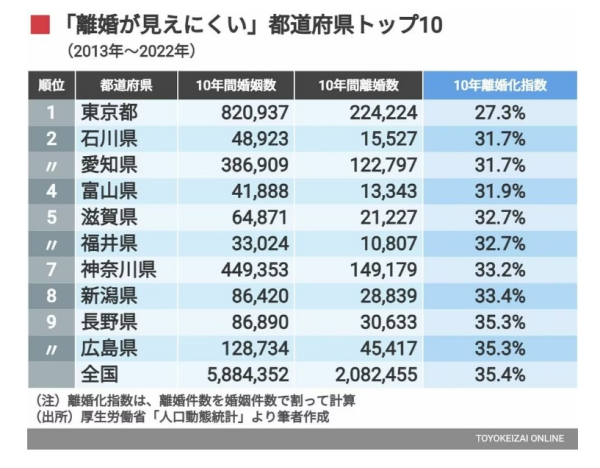
Two Observed Patterns of Low Divorce Rates
Compared to Kochi Prefecture, which has the highest divorce index, Tokyo shows a difference of 17.8 percentage points. It's important to note that in regions with low divorce indices, two patterns can be observed:
- Popular areas for young people, where a large number of young individuals move in (divorces are not particularly noticeable because there are many newlyweds, which means a lot of positive factors offsetting the negative ones).
- Areas where even though young people are leaving, married couples who stay in the region report higher marital satisfaction, making divorce less likely (marriage numbers have significantly decreased, but divorce numbers are low, indicating that there are few positive aspects but also few negative aspects).
Over the past five years, significant changes have occurred in the perspectives and lifestyles of the Japanese people due to the rapid increase in educational levels and advancements in employment-related legislation. In today's era, the risk of divorce is extremely high if you get married without making arrangements for married life with someone you know.
Among divorced couples in Japan, 32% divorce within five years of marriage, and 52% divorce within ten years. This means that over half of divorces occur within the first decade of marriage. Addressing this significant societal issue is a challenge that the Japanese government needs to confront.

